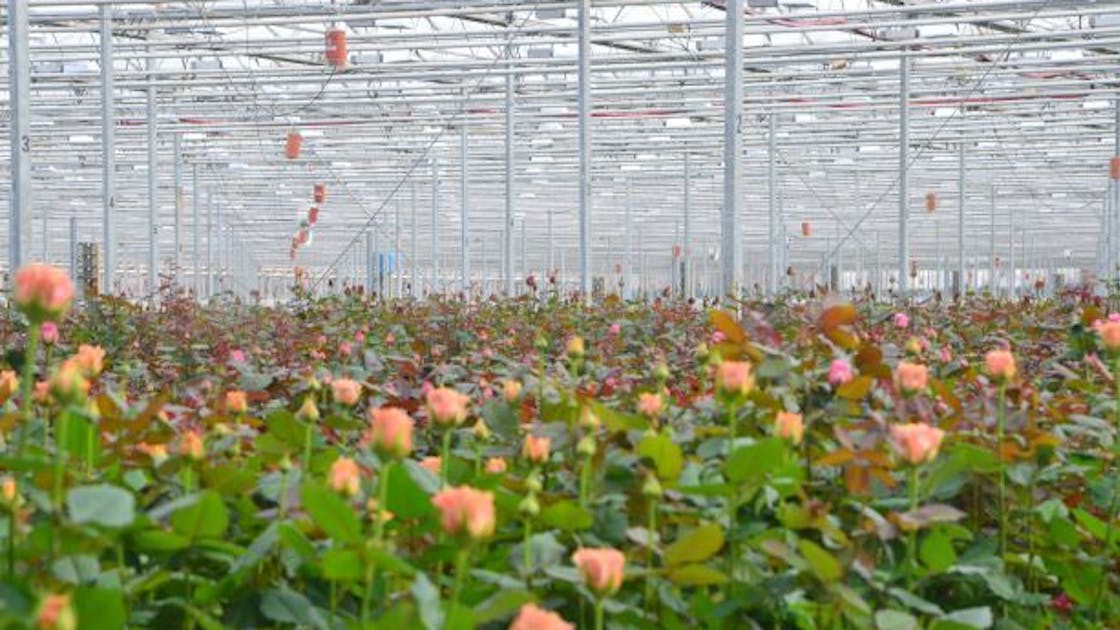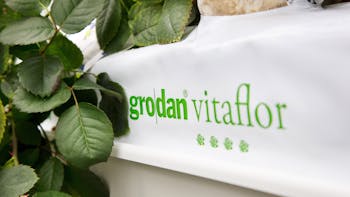The plant density may reach 6.0 to 7.5 plants per square metre. Therefore, a single slab can host 6 to 8 plants. Accordingly, there may be 6 to 8 drippers per slab (by the number of the plants). The substrate volume is 18 to 24 litres per square metre, which is two to three times more compared to growing tomatoes. The growing period is 5 years and longer, therefore it's important to use denser substrate which is able to keep its structure intact for the entire duration of the growing period.
In the greenhouse conditions these aspects are combined with a heterogeneous culture (different stages of different plants on the same slab), relatively low transpiration of 1.8 to 2 ml per joule, and low EC (not exceeding EC 2.8), which is approximately half what is used in tomato cultivation processes.
The substrate is very wet, and the amount of water supply and drainage is quite high. This is necessary in order to keep the EC level low and to compensate the difference between the slabs. All these conditions are very vegetative. Therefore, it's highly important to pay attention to the night humidity decrease. The water should be evenly distributed in the slab vertically, it's also very important for this crop.

In 2011, the Dutch manufacturer Grodan has developed Vitaflor, a new type of substrate for roses. Main advantages of Vitaflor as compared to the previous solutions are: higher density, thicker and more durable fibres, and the NGS technology. This substrate was first used in the Netherlands in 2011 to plant Red Naomi roses, and the feedback was extremely positive:
"It's the densest slab we've ever seen."
"I can easily water flowers longer in the daytime"
Since that moment, Vitaflor has become the standard for roses. Vitaflor has become the best-selling slab in Benelux in the past 7 years. Compared with Flortop Rosa, it's sturdier. Additionally, the overall water content of the slab is 3% to 4% lower, which makes it more steerable.
If we compare Vitaflor with other slabs, the figures are as follows (at 50% saturation):
| Vitaflor | Others | |
| Top | 42% | 32% |
| Middle | 50% | 49% |
| Bottom | 58% | 69% |
| Std. deviation | 14% | 18% |
The slabs used in the Netherlands are generally 1000 x 120 x 75 mm in size. The standard amount of substrate is 18 litres per square metre, and the standard height of the slab for roses is 7.5 cm, which has been a standard for 40 years. However, one of the latest trends in the Netherlands is the transition to the 100 mm slabs. What is the reason behind this change?
In fact, there are several reasons:
- Durability -- Slabs should retain the perfect shape even after 9 or 10 years.
- Insurance -- In the case of pH drops down, if the slab "dissolves", there is more remaining buffer volume because, from the beginning, there is 25% more substrate.
- The irrigation process is easier.
It's an important consideration for long-term cultivation.

In 2018, Grodan has launched a new slab production line in Elabuga, Russia. This production line uses the NG2.0 technology, which makes it possible to manufacture slabs with more uniform structure and water content within a single slab and between individual slabs.
Presently, two types of Vitaflor slabs are manufactured: 1000 x 195 x 75 mm and 1000 x 235 x 75 mm. The foil may be pre-cut with 6, 7 or 8 holes for plants.
Since this new line has been introduced, Russian-made slabs were supplied to the following rose-growing companies: TK Podosinki, OOO Zelonyy Dom, ZAO RouzHill, OOO Dolina Roz, TK Mokshanskiy, and OOO Yug-Agro. Customers consistently praise the high quality of the slabs manufactured at the Grodan plant in Russia.

Learn more about Grodan Vitaflor
Download our Grodan Vitaflor Product Data Sheet








